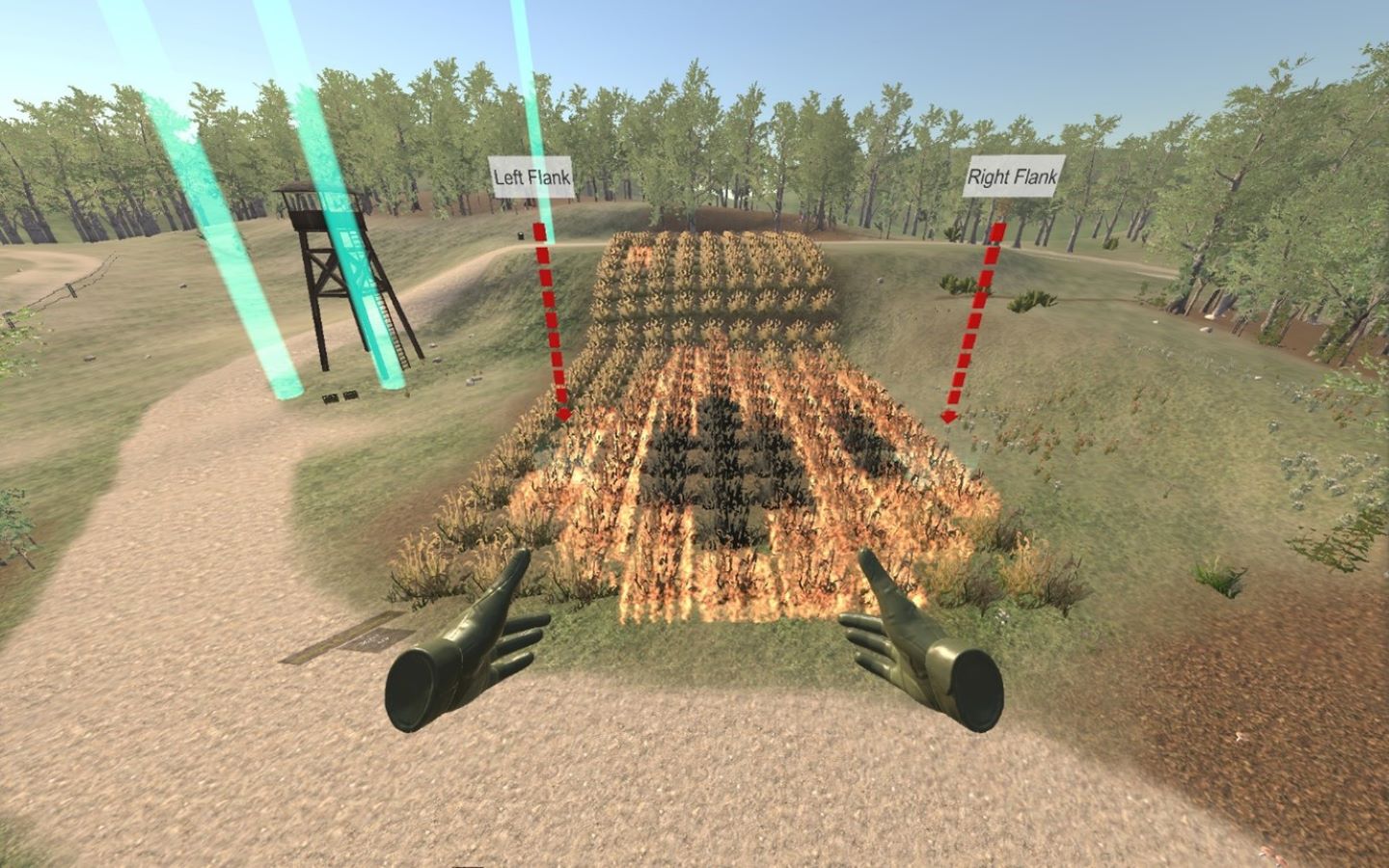Immersive Training Environment for High Risk / High Cost Tasks
2021 – ongoing

Summary
Firefighting is a dangerous profession, making safe and effective training complicated. In-person live demonstrations involving fire must be planned and conducted with the utmost care, with training often using simple props to represent fire or focusing on other routines that do not directly involve fire, such as proper equipment use and protocol. However, virtual reality has the potential to transport the user to an almost-real, safe virtual learning environment, opening the possibility of the technology being an economical, effective, and realistic supplement (or alternative) to real-life training exercises.
This project explores the feasibility of using virtual reality for training firefighters and focuses on two key research questions. The first focuses on how virtual reality affects learning outcomes and whether it can supplement or replace current training routines. However, the benefits of a technology can only be realised if it is accepted and used. As such, the second research question focuses on identifying the key factors necessary for the technology to see adoption and integration.
For this project, a custom virtual reality learning environment was developed over a year. Set in a forest environment, users learn from various lessons designed to teach core fire and vegetation behaviour concepts. Fire in the environment propagates based on the vegetation’s size and moisture level and is affected by terrain, wind power, and direction. Lessons encourage the user to explore concepts through interactive simulations and visualisations, enabling learners to construct their own knowledge.
Two studies have been carried out, one targeting each research question. 55 people have participated, ranging from students with no fire experience to professional firefighters with over 16 years of experience. Work is ongoing, but current results show that virtual reality is an engaging, motivating and highly promising technology that, although not without its difficulties, could have a big part to play in the future of firefighter training.
Acknowledgement
This research received funding from Fire and Emergency New Zealand (FENZ).
Researcher and Contact
Supervisory Team
-
- Prof. Stephan Lukosch, HIT Lab NZ, University of Canterbury
- Assoc. Prof. Simon Hoermann, School of Product Design, University of Canterbury
- Prof. Robert Lindeman, HIT Lab NZ, University of Canterbury
Research Outputs
-
- Wheeler SG, Hoermann S, Lukosch S, and Lindeman RW. (2024). Design and assessment of a virtual reality learning environment for firefighters in Front. Comput. Sci. doi: 10.3389/fcomp.2024.1274828
- Wheeler, SG, Hoermann S, Lindeman, RW, Ghinea G, and Covaci A. (2024). Prop-oriented world rotation: enabling passive haptic feedback by aligning real and virtual objects in virtual reality. Multimed Tools Appl. https://doi.org/10.1007/s11042-024-18200-4
- Mcgrath G, Kiel J, Wheeler SG, Hoermann S, Clark AJ, and Piumsomboon T. (2023). Slingshot: A Novel Gesture Locomotion System for Fast-paced Gameplay in Virtual Reality. In Proceedings of the 29th ACM Symposium on Virtual Reality Software and Technology (VRST ’23). Association for Computing Machinery, New York, NY, USA, Article 76, 1–2. https://doi.org/10.1145/3611659.3617203
- Wheeler SG., Hoermann S., Lindeman RW., Ghinea G. and Covaci A. (2021) Content-rich and Expansive Virtual Environments Using Passive Props as World Anchors. In Proceedings of the ACM Symposium on Virtual Reality Software and Technology, VRST. https://dl.acm.org/doi/pdf/10.1145/3489849.3489947
- Wheeler SG, Engelbrecht H and Hoermann S (2021) Human Factors Research in Immersive Virtual Reality Firefighter Training: A Systematic Review. Front. Virtual Real. 2:671664. doi: 10.3389/frvir.2021.671664
People

Steven Wheeler

Stephan Lukosch

Simon Hoermann

